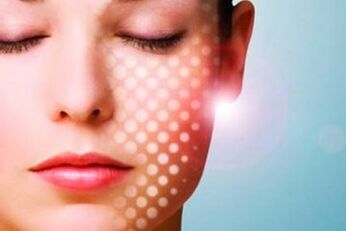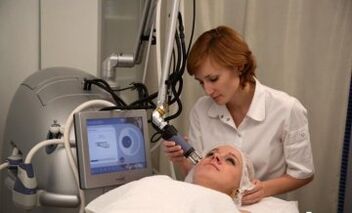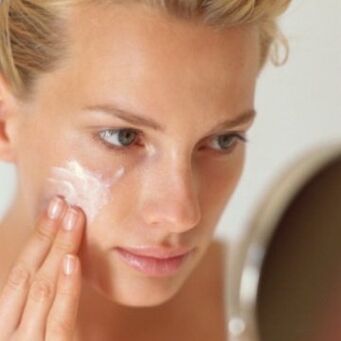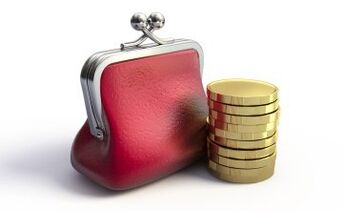
Fraxel is a laser "resurfacing" method of the face and body that helps to deal with skin problems caused by age and stress.
The procedure is almost as effective as surgical braces and, after pyrolysis, skin cells begin to actively, as in youth, produce collagen and elastin, i. e. beneficial changes occur. in multiple layers at once, not just the outer epidermis.
This procedure is very effective, but at the same time traumatic. It can only be done in specialized clinics.
What is it - fractional photothermolysis, what is the essence of the method and its effectiveness, indications and contraindications for face and body procedures with fraxel technology, before and after imaging, consequencesand reviews of the laser process, estimated price and what equipment is used - all of this we will try to tell you more.
general information
Pyrolysis is the process of destroying the structure of tissues under the influence of high temperature. The concept was created and mediated by physicians, and then put to use by estheticians.
And photothermal is also pyrolysis, but it's caused by exposure to light energy. In cosmetology, it is used in photocoagulation and laser "resurfacing" of scars and scars.
Fractional photothermolysis is a technique in which the photothermal process does not affect the entire surface of the skin, but only individual areas of the skin. This means we can talk about focal destruction of tissues by heating them with the help of laser (light) energy.
The nature of the procedure and other names
Fractional photothermolysis is classified as a negative stimulation to the skin, as a certain type of trauma is applied during the session, in this case a burn.
In order to achieve the desired cosmetic results, you need to start the process of skin regeneration and recovery after damage.
This type of thermal burn looks like a "column", which is formed in the thickness of the dermis under the targeted action of the laser beam. This "column" in cosmetology is called the "micro-treatment zone", or for short - MLZ.
In diameter, they cannot reach more than a tenth of a millimeter: from about 0. 1 to 0. 4 mm, with penetration depths up to 0. 5 mm. Depending on the type of process chosen, from ten to several thousand such microspheres can be located per square centimeter of surface, while the impact rate is 3000 MLZ/sec.
If we analyze the mechanism of action of fractional photothermolysis, then it is similar to mesoscooter therapy, but when using a roller, micro-damages are applied mechanically using a needle.
In cosmetology practice, the concept of fractional pyrolysis has several commonly used synonyms:
- photothermal heat through the skin;
- DOT therapy;
- fractional laser "polished";
- LAFT rejuvenation;
- fractional laser nano performance;
Suppressive and non-destructive methods
Laser ablation is the evaporation of a substance using a laser pulse. When using ablative fractional photothermolysis, choose a type of laser radiation, the energy of which is mostly absorbed by water molecules.
In a short-term effect on a localized area, the laser beam almost instantly heats the water contained in the tissues, up to 300C. Thus, the entire "column" evaporates and in its place a microscopic open wound is formed, surrounded by layers of thermally coagulated cells.
After photothermal ablation, the recovery is slower and much longer than with non-ablation.
But objectively, the results of the process will be better, the rhinoplasty effect is more obvious. It is best to use a course of 2 to 6 sessions. But during such surgery, the patient is at risk of infection of certain deep layers of the skin.
Non-ablation fractional pyrolysis can be attributed to gentler microtrauma techniques. A laser beam is used, which practically does not damage the epidermis, forming a burn below the epidermis.
The destroyed tissue does not evaporate, but remains in the "column", naturally, without an open wound. Lifting is not as obvious as with the first ablative method, as the cell breakdown products are not removed at the time of the procedure, meaning there is no "tightening" effect on the skin.
It is recommended to use the course of 3 to 10 sessions. For the patient, there is practically no risk of infection of the deep layers of the skin, since there is no violation of the integrity of the surface.
Indications, effects
Indications for the appointment of a procedure using Fraxel technology can be for the following reasons:
- the need to stimulate wilted and aged skin;
- treatment of pigmented/depleted lesions;
- scar removal, post-acne and small scars;
- the need to remove stretch marks.
Not suitable for keloid removal.
Favorable
How is this method different from the classic laser "polishing" method? With the traditional approach, burns affect a large area, and with fractional exposure, burns are characterized by spot and localization.
There is space between burn injuries with intact skin, and this makes photothermolysis less traumatic and speeds up healing time.
This method is suitable for treating any part of the body, but in most cases it is used specifically for the face. When using Fraxel technology, beauticians can manipulate even the skin on the eyelids.
A feature of this optical pyrolysis of the dermis is the innovative design of the DOT device itself, which avoids missing areas of the skin or overlapping one area on another.
Mechanism of action
At the preliminary consultation session, the esthetician determines the goal that the client wants to achieve, finds out possible contraindications to the course, talks about the possible results and the suitability. with customer expectations.

Your doctor will no doubt prescribe a point about the risk and development of complications after the procedure, as well as how to care for your skin after undergoing a phototherapeutic procedure.
It is necessary to discuss and choose an appropriate pain reliever method in advance, and the customer must be sure to report any allergic reactions to the drug if any.
A few hours before the procedure, a superficial peel is performed, the purpose is to even out the thickness of the stratum corneum on the skin.
During the operation, the patient may experience moderate pain and discomfort. Their severity can in no way depend on the model used. The level of pain is based on the depth and intensity of the laser, these parameters are determined by the therapist himself, focusing on the goal of treatment.
The more the problem is ignored, the deeper layers need to be affected.
But usually, conventional creams with numbing effect are used as an anesthetic, which is applied to the work area up to 40 minutes before the start of the session.
During the session, the esthetician moves a nozzle across the surface, which emits a targeted laser beam. If such a need arises, the same area is treated again and again in the same process.
Duration from 15 minutes to 1 hour. It all depends on how well the leather is treated. Upon completion of fractional photothermolysis, a soothing cream is applied to the "polished" surface.
To achieve the desired result, it is necessary to carry out several procedures - from 3 to 10, depending on the selected type of exposure. You can have a session once a month.
Recommendations (training and recovery)
A few days before the scheduled procedure, the patient should begin taking prophylactic antibiotics and antiviral medication. Of course, if there is objective evidence for this.
On the day that fractional photothermolysis occurs, the person should avoid alcohol and do not play any sports at all.

After non-ablative photothermolysis, recovery lasts up to three days, after excision - at least a week.
If the "polishing" was based solely on excision, within a few days the patient would experience redness, swelling, burning sensation, and discomfort.
After consulting a specialist, you can apply a cool compress or apply a topical pain reliever to the skin, which comes in the form of a spray.
After at least three days have passed, the color of the "polished" dermis may change slightly. For example, it can become a false tan due to the accelerated breakdown of pigment-containing deposits from previously necrotic cells.
Dry skin will appear, begin to peel, and a person may even experience itchiness for a short time. All of these symptoms are not dangerous and will go away on their own after about a week. It is strictly forbidden to scratch itchy skin!
For post-fraxel rehabilitation without complications, you need to follow some basic recommendations:
- You need to take care of your skin and be sure to apply the recommended external products. In most cases, these are medications prescribed to treat heat burns and moisturizing sprays;
- The crust that forms on the surface when the wound heals should not be removed artificially, can only fall off naturally;
- If, prior to the procedure, the patient was taking antimicrobial and antiviral drugs, their course should be continued according to the instructions;
- In order not to develop hyperpigmentation, it is necessary to keep the treated area away from direct sunlight for at least a month. Usually use sunscreens with SPF 40+;
- During the recovery period, scrubs and other mechanical cleaning methods should not be used.
Possible side effects and complications
Despite the fact that fractional photothermolysis is one of the most modern and safest methods, it also has a number of side effects:
- bacterial infection, the development of streptoderma or staphyloderma;
- erythema persists for more than three days;
- edema on the surface of the skin treated with a duration of more than two days;
- hyperpigmentation in the post-inflammatory period;
- the appearance of burns, corrosive cracks;
- exacerbation of HSV1 or acne;
- microscopic bleeding under the skin.
Contraindications (general and local)

Fractional photothermolysis is not performed with the following general contraindications:
- cancerous tumor;
- lactation period;
- HSV1 and HSV2 in the acute phase;
- infectious diseases;
- chronic diseases in the manifestation stage;
- diabetes of any kind;
- defects and impairment of the cardiovascular system;
- disorders in the work of the organs of the hematopoietic system, poor blood clotting;
- the presence of autoimmune diseases;
- tendency to form dark keloid scars;
- status epilepticus or convulsive syndrome;
- mental deviance;
- taking isotretinoin for six months;
- a recent tan or a visit to the solarium.
And the following local contraindications:
- all inflammatory processes are localized in the intended work area;
- deterioration of the integrity of the skin;
- any tumor of unknown origin;
- skin cleaning or any other procedure that may injure the skin.
Where and on what devices is it done, estimated price

The cost of a fraxel procedure depends on the area being treated, so the estimated price for fractional laser resurfacing will vary.
Only qualified professionals can conduct phototherapeutic sessions in a cosmetic hospital.
For the fraxel rejuvenation procedure itself, devices with CO2 or an erbium laser are used. Most conventional salons do not have the necessary equipment or trained staff.
The use of lasers for cosmetic purposes remains controversial. But as it may be, laser-based procedures are among the most common, effective, and safe.
Comment
Please read and refer to some reviews about fractional laser facial rejuvenation:
- First review: "I am 35 years old this year. Have attended 2 fractional photothermolysis sessions. The second visit came 30 days after the first visit. As a result, I noticed that my pores, usually slightly widened, tightened, and the skin on my forehead and cheeks started to look much more even. it disappeared without a trace after three days. Now I look in the mirror and enjoy my own face. "
- Second review: "I want to tell you about my impression of this method, as I feel a positive result. After three treatments, I noticed a lightening of the skin, pigmentation spots on one side. some parts of my face light up, scars start to fade visibly and my skin looks plump. These changes don't happen all at once but gradually. After about 4 months, I start to look younger 5-6 years old for my age I recommend everyone who takes care of themselves to try this amazing thing.
- Third review: "I am very afraid of this type of procedure, believing that there are more undesirable consequences from them than pluses. However, when the first wrinkles appear, the idea of "skin transformation"miracle skin" began to visit my head more and more often. So I decided to have a phototherapeutic session. During the process, there were slightly painful, but tolerable sensations. over time, cheerful facial changes become apparent: wrinkles around the eyes are blurred, complexion is brighter, contours are tightened. Overall, I like this effect. I will use itRepeat this process if necessary.
- Fourth review: "I consider this method indispensable for any woman who wants to stay young and attractive. I have discovered something new for myself and am extremely pleased. There are so many positive moments and they're all reflected on my face: wrinkles and pigmentation are gone, skin is no longer flabby, less inflamed and most importantly I like myself so much better. I would like to advise everyone to love themselves, not to skimp on beauty and use effective treatments to maintain their youth.














































































